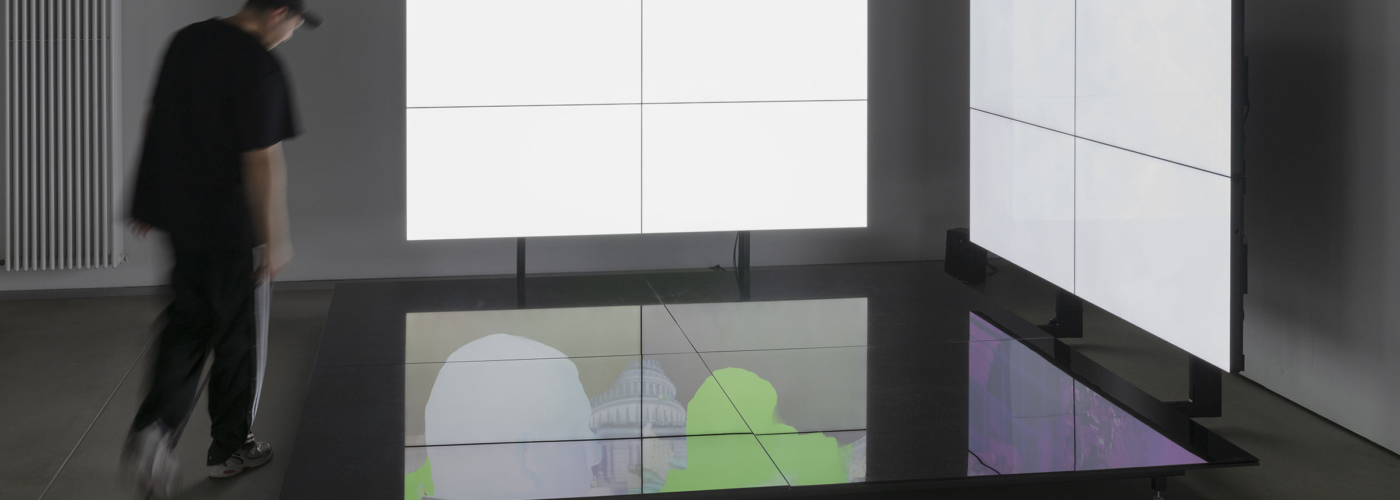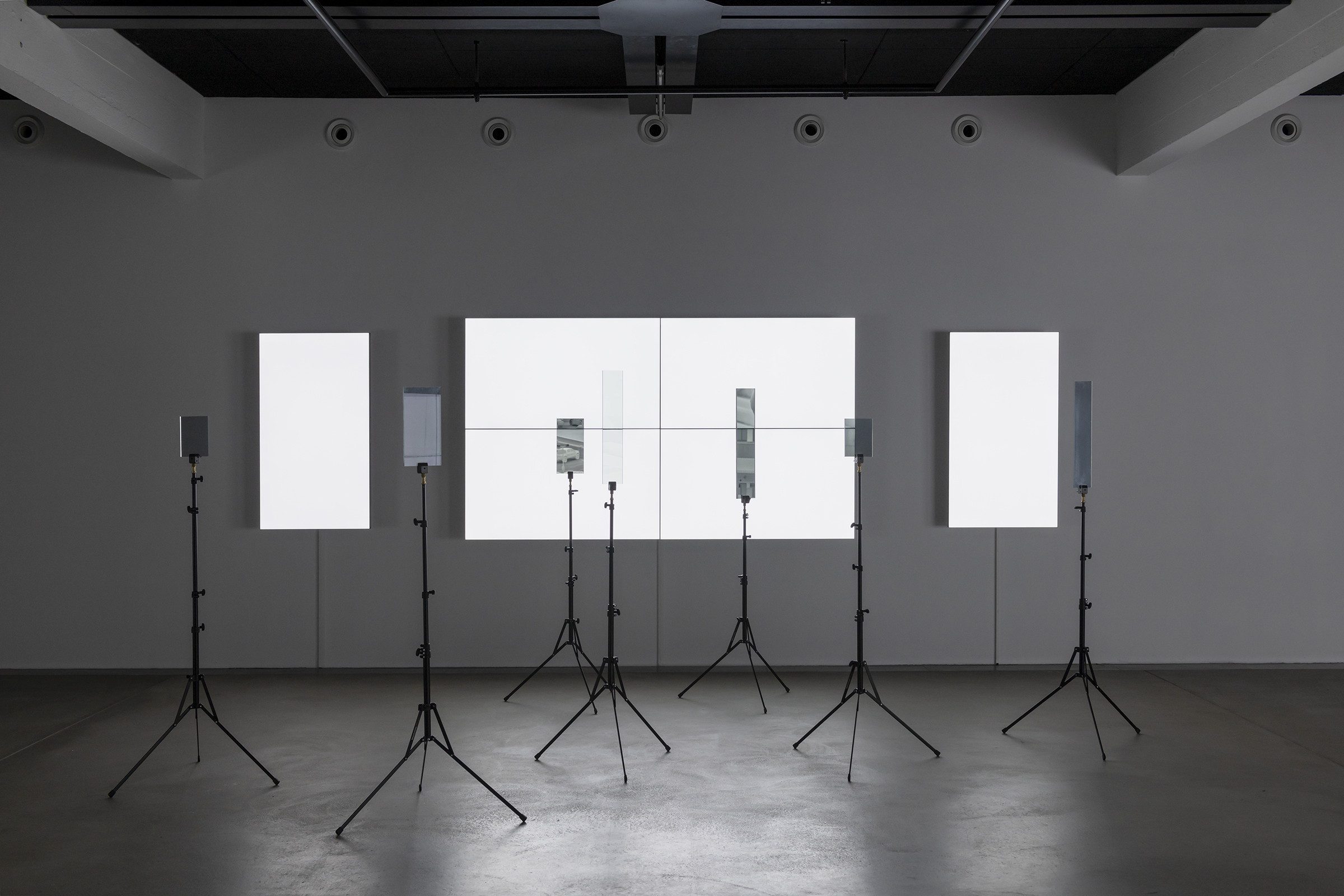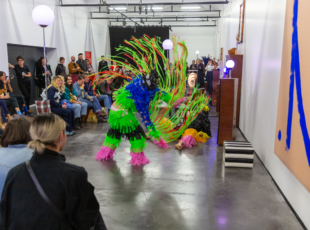Emmanuel Van Der Auwera or the post-truth era

Article author :
An observer of the phenomena brought about by the digital revolution, the Belgian artist Emmanuel Van Der Auwera creates powerful works midway between fiction and documentary. Presented in the form of video installations and sculptures, they present a society toppling over into the era of post-truth, in which the production and distribution of images take concrete shape through sensitive subjects: teenagers filming their reactions as they watch snuff movies, young people announcing their imminent suicides on the social networks or online conspiracy movements…
‘A few years ago, there was only the medium of the camera and of cinema. As of now, with the internet and the smartphones, there is a fragmentation of the media. It is for that reason that I use a lot of screens: they are windows onto our reality,’ announces Emmanuel Van Der Auwera. Viewers will not make any misidentification errors: the style of the Fresnoy alumni (2008-2010) is instantly recognisable. Screens arranged in such a way as to sculpt space, a stylised scenography, powerful videos. One example is VideoSculpture XX (The World’s 6th Sense) (2019), where several screens form the installation. Videos of thermal camera provenance (used in a military, security or medical context) are revealed through a system of polarisation filters. Here the military thermal cameras are not directed at enemies real or imagined, but turned on the population of Las Vegas. They erect another reality, a portrait of a city emptied of its colours and of its pomp.

More generally, it is the whole of the VideoSculpture series which is the archetype of his artistic imprint. The artist employs the screen as a sculptural material with a well-established process: he commences with an act of destruction by wielding a knife to a screen in order to slice off a surface layer of lamination. This layer, glued to each LCD screen, serves as a filter. Without the mediation provided by these filters, the images become impossible to see with the naked eye. A second step involves placing the removed filters on tripods in front of the screens, which renders the images visible, but solely in the form of fragments. ‘The gesture of shredding a screen is subversive. Screens are iconic objects of our society. By removing this film, I am attempting to deconstruct the operation and to show an image “in absentia”.’



Presented in the leading institutions of Europe – the KW of Berlin, the Geneva Centre of Contemporary Art for the Moving Image Biennale, Ars Electronica in Linz or Casino Luxembourg in Luxembourg – his VideoSculpture series and his other works are contributing to a renewal of the documentary genre. ‘I utilise plastic means to get very close to the limits of the documentary. And even if I am trying to go beyond the standard form of film, the documentary process – that of taking an interest in the real – is central in my works.’ Phenomena which are thus given birth to by digital technologies and often appear on the internet.
Analysis of social transformations
‘On the scale of humanity, in just three or four decades, we have lived through a technological revolution equivalent to several millennia of evolution. For me, these technologies imply not only an industrial revolution. They are initiating a revolution of the personal: all of that is changing the way an individual wishes to be recognised, engage in relationships, experience their emotions. And, at the end of the day, what we collectively decide to build. In short, the real world and the digital world are merging. Our society has entered the post-truth era,’ sums up Emmanuel Van Der Auwera, whose corpus of works deeply analyses the mutations engendered by digital technologies. Starting with the staging of the self on the social networks. A Certain Amount of Clarity (2014) thus shows teenagers filmed by their own cameras. They are watching a ’viral video’ of a genuine murder. Caught between two images. That which they are watching but which we cannot see, and that of the watcher, who plays, lives, produces and distributes their own image. ‘It is this mirror effect which is interesting. Starting from this work, I started to question the functioning of the media. And an important issue: how to represent horror?’
Continuing this thematic, the video Wake Me Up at 4:20 (2017) explores the trends linked to YouTube celebrities and the troubling phenomenon of suicide memes providing step-by-step instructions and inciting suicide. The artist creates a video with avatars designed by a 3D software programme and which offer their opinions on the subject… Facial recognition software is here used to animate the facial expressions of the avatars. The technology also produces digital glitches, the freezing and strange deformations of faces, which render them all the more vulnerable.
Post-truth and artificial intelligence
The artist also explores the generative artificial intelligences which are contributing to the shaping of this post-truth era. First of all with VideoSculpture XXV (Archons) (2022), which uses the images and voice alterations generated by AIs. The work takes as its starting point the assessments of the cybersecurity expert Rik Ferguson, in which futuristic scenarios are explored for 2030. VideoSculpture XXV (Archons) anticipates a future in which there are no more devices and where avatars are widespread. The bots have become our imaginary friends. On our deaths, our avatars continue to exist. ‘The use of AI tools reinforces my question: in a world in which reality is becoming relative, what separates the authentic from the synthetic?’

Edition of 5 plus 1 AP. Still image

Thousand Pictures of Nothing, Harlan Levey Projects, 2023. Photo: Adriaan Hauwaert

Thousand Pictures of Nothing, Harlan Levey Projects, 2023. Photo: Adriaan Hauwaert
At the same time as artificial intelligences are becoming widespread, the artist fully grasps their creative potential. White Cloud (2023) is thus almost entirely created with the aid of AI. The video shows the lives of workers exploited in a rare earth mine in China. Even though the issues are related to geopolitics, to ecology, to capitalism, the heart of the film rests on the testimony of a solitary miner hoping for a better future. ‘I wanted to go to this remote and isolated mine in Inner Mongolia. It is there where the majority of the rare earths used in the manufacturing of everything in the world that is electronic are produced. In one sense this place is central to our modes of existence, yet it is inaccessible for multiple reasons. Experts describe it as a site where the exploitation of human beings and of the environment is tragic. Not being able to travel there physically, I used AI to go as close as possible to the reality of this ‘black site’ of our digital world’s assembly line. Even though the image of the film is synthetic, it is based on the genuine testimony of an on-site miner who talks about his working and his living conditions. Taken off Douyin (TikTok in China), this testimony is the film’s guiding thread.’
The artist’s next work will continue to explore this post-truth in the time of AI. ‘I am interested in crisis actors. It’s a conspiracy movement which claims that mass killings and terrorist attacks are, in reality, staged events in which actors are used to play the roles of the victims. The question is now of understanding how fiction eats up the real.’ Focused on this next project, Emmanuel Van Der Auwera is already training an incisive and hardly reassuring gaze on the future of our society. ‘In fact, for several years now, we have been taking part in a mass experiment which is now garnering its results. The internet and the social networks were a huge scanner. It was a gateway to go beyond the human and our profound understanding of what the truth is.’
A story, projects or an idea to share?
Suggest your content on kingkong.





